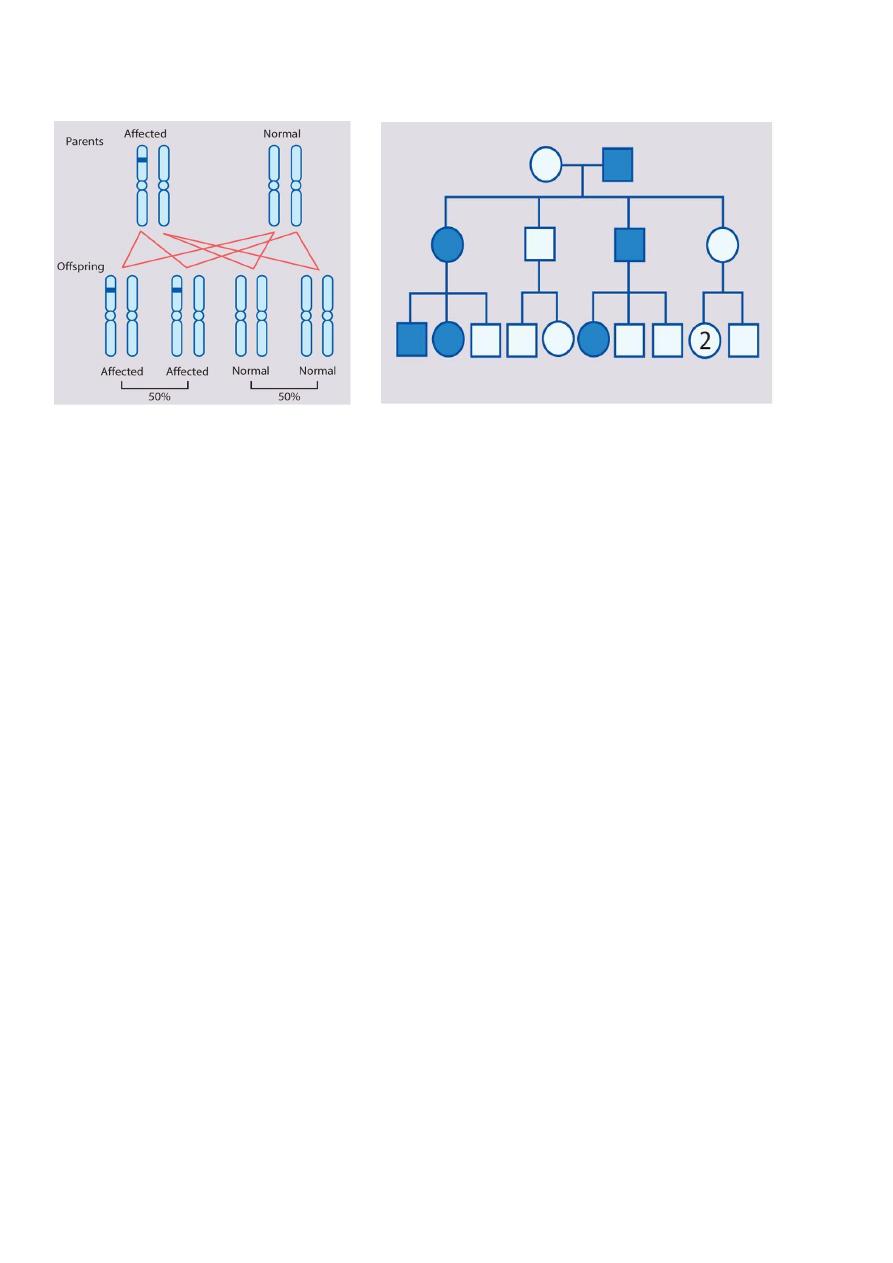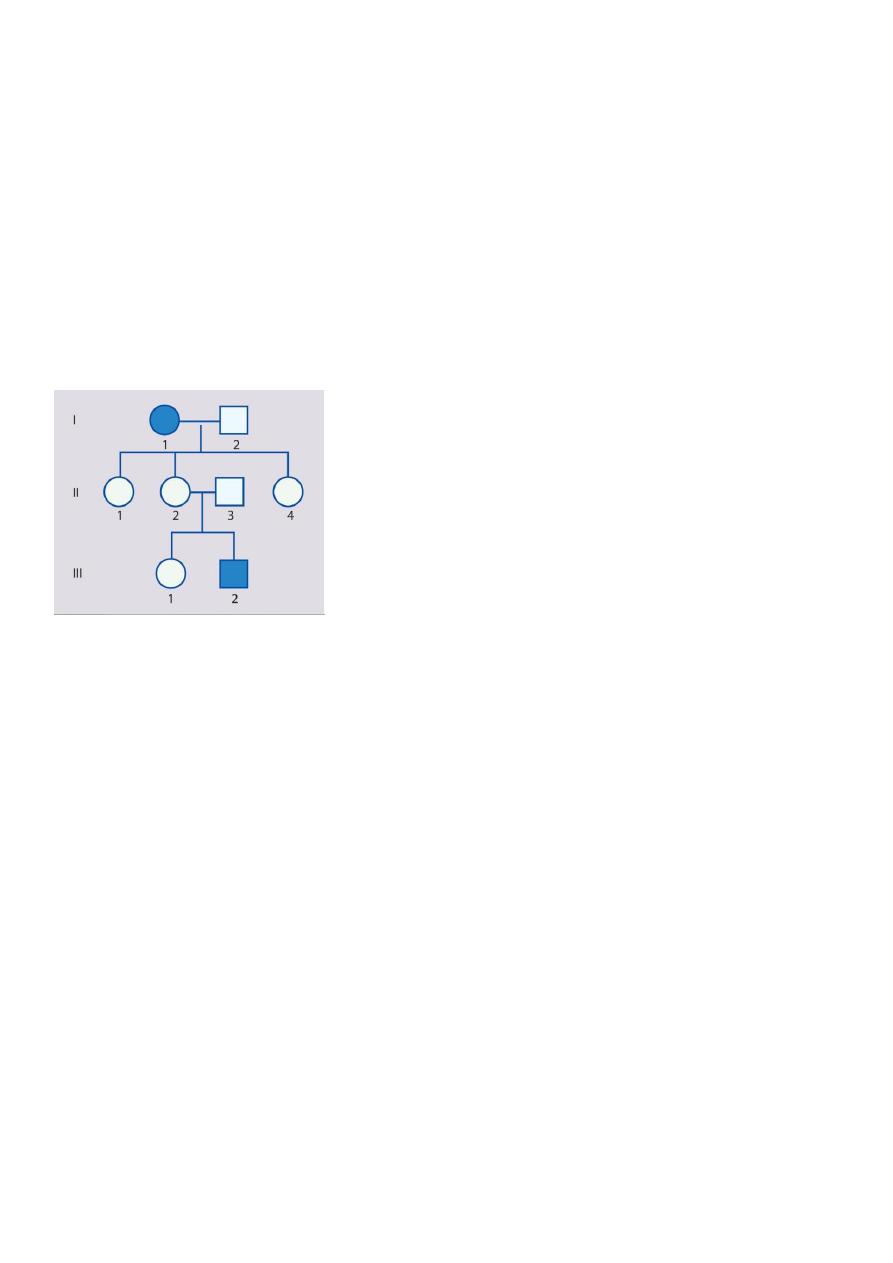
1
Fifth stage
Pediatric
Lec-7
.د
أوس
22/2/2016
Genetics
Genetic disorders:
common, with 2% of live-born babies having a significant congenital malformation and
about 5% a genetic disorder
burdensome to the affected individual, family and society, as many are associated with
severe and permanent disability
Genetically determined diseases:
1. Single gene mutations,((Mendelian disorders)
2. Chromosomal disorders
3. Multifactorially inherited conditions
4. Disorders that show an unusual pattern of inheritance
5. Teratogenically caused conditions
Mendelian inheritance:
Disorders with these patterns of inheritance, described by Mendel in 1865, are rare
individually, but collectively numerous, with over 15 000 single gene traits or disorders
described
There are three classic forms of genetic inheritance: autosomal dominant, autosomal
recessive, and X-linked
Autosomal dominant inheritance:
This is the most common mode of Mendelian inheritance
Autosomal dominant inheritance is determined by the presence of one abnormal gene on
one of the autosomes (chromosomes 1–22).

2
Male and female offspring each have a 1 in 2 (50%) chance of inheriting the abnormal gene
from an affected parent
Tuberous sclerosis
Marfan syndrome
Neurofibromatosis
Huntington's disease
Retinoblastoma
Waardenburg syndrome
Myotonic dystrophy
Familial hypercholestrolemia (LDL receptor defect Type IIa)
Adult polycystic kidney disease
von Hippel Lindau
Familial adenomatous polyposis and Peutz Jeghers Syndrome
Hereditory spherocytosis
Achondroplasia
Ehlor's Danlos (vascular type)
Acute intermittent porphyria
Hypertrophic Obstructive Cardiomyopathy (HOCM)
Von Willebrand Disease
Polydactyly
Osteogenesis Imperfecta (Except Type VII)
Hereditary hemorrhagic telengiactasia (Osler-weber-rendu syndrome)
Osteopetrosis Type II (Adult type)
Hypokalemic Periodic Paralysis

3
Variation in expression:
Within a family, some affected individuals may manifest the disorder mildly and others
more severely. For example, a parent with tuberous sclerosis may have mild skin
abnormalities only, but his or her affected child may have, in addition, epilepsy and learning
difficulties.
Non-penetrance:
Refers to the lack of clinical signs and symptoms in an individual who must have inherited
the abnormal gene. An example of this is otosclerosis, in which only about 40% of gene
carriers develop deafness
No family history of the disorder:
A new mutation in one of the gametes leading to the conception of the affected person.
This is the most common reason for absence of a family history in dominant disorders, e.g.
>80% of individuals with achondroplasia have normal parents.
Rules of Autosomal Dominant Inheritance:
Trait appears in every generation
Each child of an affected parent has a 1 in 2 chance of being affected
Males and females are equally affected
Male-to-male transmission occurs
Examples of Some Autosomal Dominant Disorders:
Achondroplasia
achondroplasia is the most common skeletal dysplasia in humans. The bony abnormalities
in achondroplasia lead to short stature, macrocephaly, a flat midface with a prominent
forehead, and rhizomelic shortening of the limbs.

4
Neurofibromatosis Type 1:
Marfan Syndrome:
Clinical symptoms mostly involve three systems: cardiac, musculoskeletal, and
ophthalmologic. Musculoskeletal findings include dolichostenomelia (a tall, thin body
habitus), arachnodactyly (spider-like fingers and toes), abnormalities of the sternum
(pectus excavatum or carinatum), kyphoscoliosis, pes planus, and joint laxity
Eye findings include high myopia, which eventually can lead to vitreoretinal
degeneration; an abnormal suspensory ligament of the lens, which can lead to ectopia
lentis (dislocation of the lens; in Marfan syndrome, the lens usually dislocates upward
and outward); and cataracts. Cardiac findings include a weakened aortic wall, which
leads to progressive dilation of the aortic root. Aortic insufficiency followed ultimately
by aortic dissection is a common complication of this disorder
